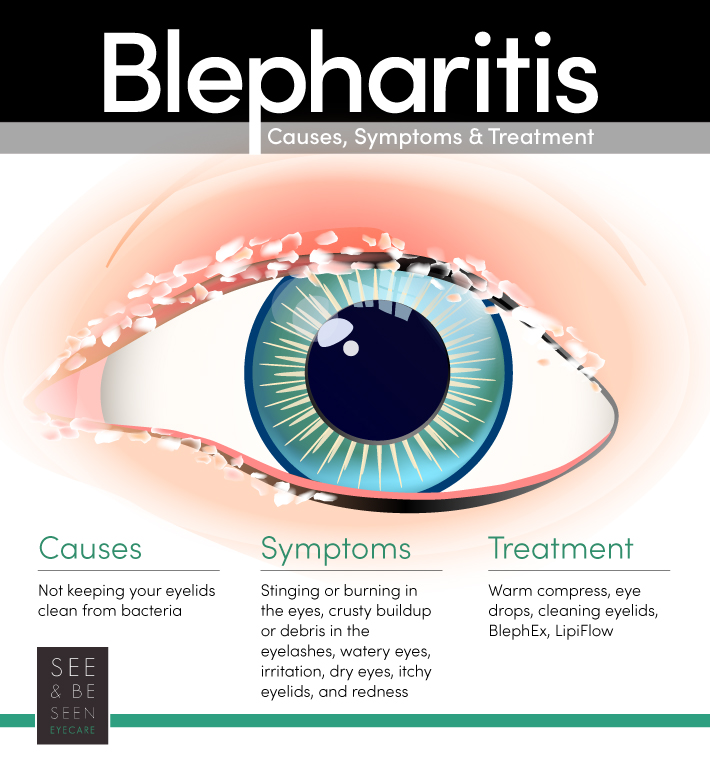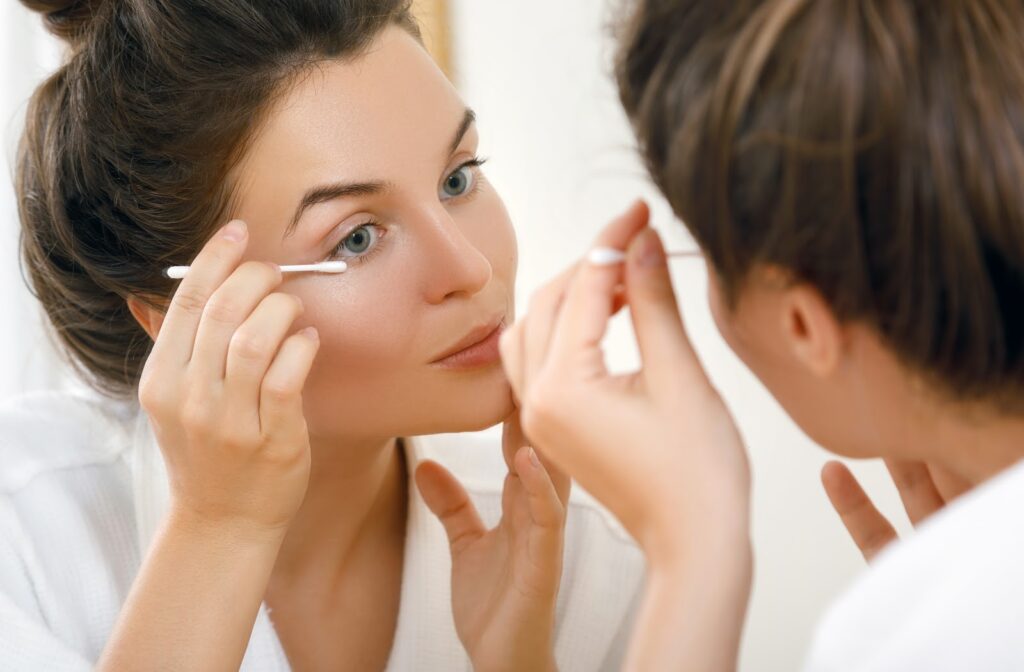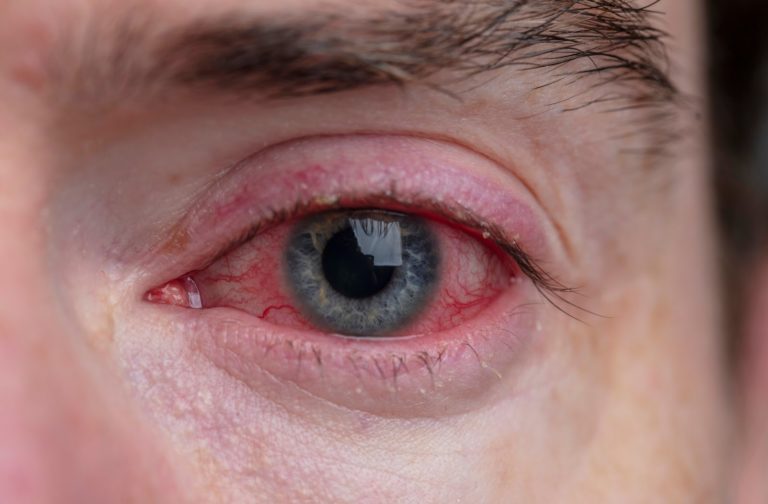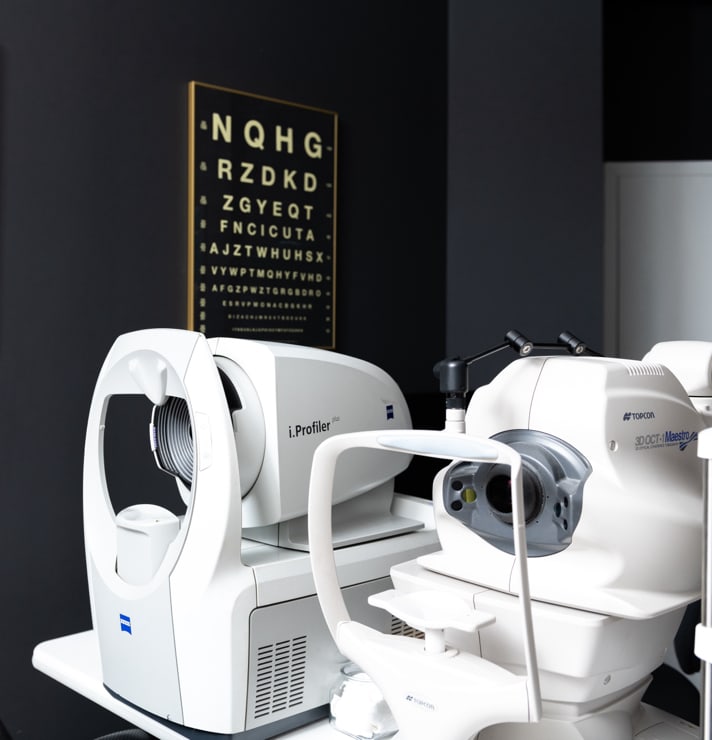We all know developing proper hygiene habits like brushing our teeth and showering regularly are important to staying healthy, but what about the hygiene of our eyes?
If you’ve been dealing with dry eyes, there is a possibility you could have also developed blepharitis. Blepharitis is very common and can be treated with the proper methods.
Keep reading to learn more about blepharitis, how it’s caused, and how it can be treated!
What is Blepharitis
Similar to dry eye, blepharitis is caused by an issue with your meibomian glands, meaning they often occur together. Your eyes will become dry from a blockage in your meibomian glands, not allowing your tears to keep your eyes moist.
In the case of blepharitis, your meibomian glands are also blocked up, causing a crusty buildup to form at the base of the eyelashes.
Blepharitis is very common if you do not clean your eyes regularly or have issues with dry eyes. Once you have developed blepharitis, there is potential for it to reoccur and continue to bring irritation and discomfort to your eyes.
If your eyes are irritated or dry, it is best to book an appointment with your optometrist to receive a diagnosis. After diagnosis, your optometrist will provide you with the recommended treatment and tips for further prevention.

Blepharitis Causes
The most common cause of blepharitis is meibomian gland dysfunction. This dysfunction is often a result of excess bacteria being stored in the upper and lower eyelashes. If this bacteria is not cleaned out regularly, it will continue to grow and cause problems for your eyes.
Once the bacteria have grown and multiplied, they will then create a substance called biofilm. Biofilm will quickly inflame the area around your meibomian glands, causing worse symptoms and dry eye disease.
It is likely that once you have developed blepharitis it will reoccur. Taking the proper prevention steps is best to protect your eyes from any further irritation.
Blepharitis Symptoms
The symptoms of blepharitis can cause irritation and extreme discomfort. While the symptoms below vary from person to person, it is common that the same symptoms will develop each time you get blepharitis.
The common symptoms of blepharitis include:
- Stinging or burning in the eyes
- Crusty buildup or debris in the eyelashes
- Watery eyes
- Irritation
- Dry eyes
- Foreign body sensation
- Itchy eyelids
- Redness
These symptoms can be even more uncomfortable for contact lens wearers. If you believe you are developing blepharitis, it is best to take out your contacts and switch to glasses until your treatment is complete.
If you are suffering from any of the symptoms above, please book an appointment to visit an optometrist.

Treatment and Prevention for Blepharitis
Luckily, there are many ways to treat blepharitis, both at home and in more severe cases in-office. Before we get into the treatments, it is important to know that blepharitis can be prevented, even if you have had it before.
Prevention
Keeping your eyelids clean should become part of your daily routine. This is the best way to prevent blepharitis. This process is simple and will only take a couple of minutes (plus it’s very relaxing)!
Start by placing a warm/hot washcloth over your eyes. Gently rub your eyelids to clear any blockages that may have started to build up. Afterwards, take a swab of cleanser designed to clean eyelids and gently rub it across your upper and lower eyelashes. Once complete, rinse your eyes with warm water (do this twice for the best results).
Treatment
If you have developed blepharitis, it is first best to book an appointment with your optometrist to ensure there are no further issues that are causing it. After your appointment, there are several treatments to bring relief to your eyes.
While treating your eyes for blepharitis, it is especially important to keep your eyelids clean, using the prevention method above. As well, applying regular warm compresses throughout the day can help bring relief if your eyes are irritated. In addition to cleaning, also try medicated eye drops and/or ointments to treat blepharitis.
If blepharitis is worsening or occurring frequently, it may be recommended to you to have an in-office procedure to assist your eyes.
These include:
While treating blepharitis, it is important to avoid any unnecessary contact or substance with your eye. This means taking a break from wearing contact lenses and using eye makeup.
Bring Relief to Your Eyes
If you are suffering from the symptoms of blepharitis or dry eye, don’t settle for regular at-home treatments that only stop the irritation for a little while. Visit your optometrist for a consultation on possible in-office procedures that can bring long-term relief to your eyes.
Interested in learning more about our procedures for treating blepharitis? Book an appointment today!













